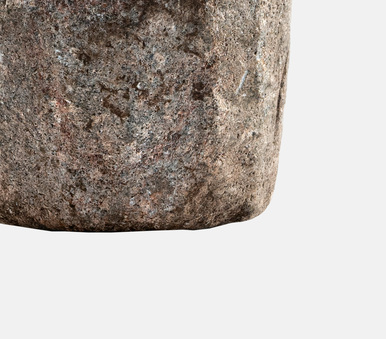The Stepnoye VII burial ground is located on the left bank of the Uy River 300–400 meters east of the village fence of Stepnoye in Plastovsky district, Chelyabinsk region. The team of the archaeological expedition of the Chelyabinsk State University and the Arkaim Museum-Reserve led by Elena Kupriyanova studied it. In 2003, a pendant ornament was discovered in the burial ground among many artifacts. In pit No. 17 a triple burial was excavated, where the remains of the two deceased imitate the so-called “embrace pose” with the position of the buried facing each other characteristic for this pose. The gender of the buried person with the pendant is not quite clear. Owing to anthropological data, the deceased is identified as a woman or a “feminine-like young man” of 15–17 years old.
The pendant ornament consisted of a leather base and round bronze plaques stitched on it along the edge. The plaques were decorated with chasing, they alternated with small hemispherical plaques and small bronze shells stitched under each other in two rows of five or six pieces. The whole composition formed a semicircle around the chest and neck of the buried person, the upper plaques were attached near the temples. The size of the plaques varied depending on their location: the largest plaques were stitched in the middle of the pendant, while their size decreased towards its edges. All the plaques have decorative patterns.
There were also pendants attached to the headdress near the temples. They were turned full and a half circle and wrapped in gold foil. Bronze temple rings were fixed onto the pendants from below, which, in all probability, were loosely hanging down.
The burial was abundant in ceramics (eight vessels were found) and other burial implements: two bronze eyed axes, bronze bracelets, amulets made of fox fangs and incisors, bronze rings and beads. According to the research available so far, it cannot be recognized that plait ornaments and pendants were different depending on the age and social status of the owner. Such jewelry, to all appearances, were simply variants of festive or ritual headdresses.

